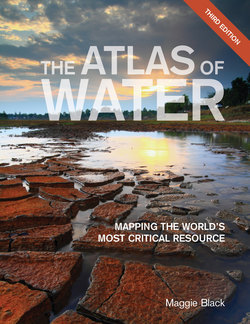Читать книгу The Atlas of Water - Maggie Black - Страница 5
На сайте Литреса книга снята с продажи.
ОглавлениеIntroduction 9 Acknowledgements 15 Glossary 16 Useful Conversions 17 Part 1 A Finite Resource 18 1 Global Water 20 The volume of water in the world never changes, but only 2.5% is fresh, and more than two-thirds of this is unavailable for human use. 2 Water’s Unequal Distribution 22 The amount of water that falls as rain, filling lakes, rivers, streams and aquifers, remains constant. At present we are still using less than a third. 3 Water Shortage 24 The spectre of water shortage is less a global phenomenon than one threatening particular regions and localities. 4 Rising Demand 26 Around 4,000 cubic kilometres of fresh water are withdrawn every year – equivalent to roughly 1,700 litres per person per day. 5 Dwindling Supply 28 About a fifth of water used comes from aquifers. Some are replenished, but many are non-renewable and are being irreversibly mined. 6 Competition and Conflict 30 As populations grow, and more water is extracted per person, there is increasing competition and conflict over the exploitation of river waters and aquifers. 7 Environmental Security 32 Aquatic ecosystems make a vital contribution to environmental security. Part 2 Water and Climate Change 34 8 Ice and Snow Melt 36 Climate change is likely to affect river flow in many complex ways. 9 Storms and Floods 38 Life-threatening and destructive floods are becoming more frequent and affecting an increasing number of people. 10 Droughts 40 The world’s drylands will become drier as a result of climate change. 11 River Basin Stresses 42 Seasonal changes in river flow and temperature of fresh water affect water quality.
Contents
